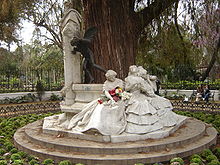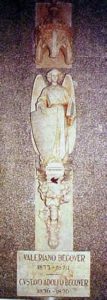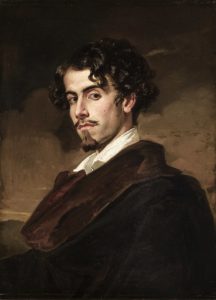 On this day in 1870, post-romanticist poet and writer, also a playwright, literary columnist, and artist, Gustavo Adolfo Bécquer died from tuberculosis in Madrid at the age of 34. Born Gustavo Adolfo Claudio Domínguez Bastida on February 17, 1836 in Seville. In my opinion, one of the most important figures in Spanish literature. He adopted the alias of Bécquer as his brother Valeriano Bécquer, a painter, had done earlier. It was after his death that most of his works were published. Perhaps his best known works are the Rhymes and the Legends, usually published together as Rimas y leyendas. These poems and tales are essential to the study of Spanish literature and common reading for high-school students in Spanish-speaking countries.
On this day in 1870, post-romanticist poet and writer, also a playwright, literary columnist, and artist, Gustavo Adolfo Bécquer died from tuberculosis in Madrid at the age of 34. Born Gustavo Adolfo Claudio Domínguez Bastida on February 17, 1836 in Seville. In my opinion, one of the most important figures in Spanish literature. He adopted the alias of Bécquer as his brother Valeriano Bécquer, a painter, had done earlier. It was after his death that most of his works were published. Perhaps his best known works are the Rhymes and the Legends, usually published together as Rimas y leyendas. These poems and tales are essential to the study of Spanish literature and common reading for high-school students in Spanish-speaking countries.
In 1861, Bécquer met Casta Esteban Navarro, and married her in May 1861. Bécquer was believed to have had a romance with another girl named Elisa Guillén shortly before the marriage, which is thought to have been arranged, by the parents of Casta. The poet was not happy in the marriage, and took any chance he got to follow his brother Valeriano on his constant trips. Casta began to take up with a man with whom she had had a relationship shortly before marrying Bécquer, something that was later blamed on Bécquer’s trips and lack of attention by Casta’s acquaintances. The poet wrote very little about Casta, as most of his inspiration at this time, (as it is the case with the famous rima LIII), came from his feelings towards Elisa.
Rhymes (Rimas)
|
Volverán las oscuras golondrinas Pero aquellas que el vuelo refrenaban |
The dark swallows will return But those who used to slow their flight |
The refrain “¡Esas… no volverán!” appears in the 20th novel Yo-Yo Boing! by Latina poet Giannina Braschi, who references Bécquer’s swallows to describe the sorrow and angst of a failed romance.
In Rhymes (Rhyme 21) Becquer wrote one of the most famous poems in the Spanish language. The poem can be read as a response to a lover who asked what was poetry:
|
¿Qué es poesía?, dices mientras clavas |
What is poetry? you ask, while fixing |
The Final Footprint
His body was buried in Madrid, and afterwards was moved to Seville along with his brother’s at Capilla de la Universidad de Sevilla.
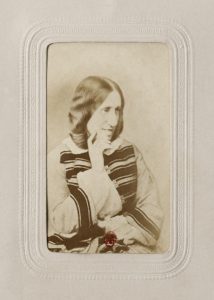 On this day in 1880, novelist, poet, journalist, translator and one of the leading writers of the Victorian era, George Eliot died at the age of 61 in Chelsea, Middlesex, England. Born Mary Ann Evans on 22 November 1819 in Nuneaton, Warwickshire, England. She is the author of seven novels, including Adam Bede (1859), The Mill on the Floss (1860), Silas Marner (1861), Middlemarch (1871–72), and Daniel Deronda (1876), most of them set in provincial England and known for their realism and psychological insight. Eliot used a male pen name, she said, to ensure her works would be taken seriously. Female authors were published under their own names during Eliot’s life, but she wanted to escape the stereotype of women only writing lighthearted romances. She also wished to have her fiction judged separately from her already extensive and widely known work as an editor and critic. An additional factor in her use of a pen name may have been a desire to shield her private life from public scrutiny and to prevent scandals attending her relationship with the married George Henry Lewes, with whom she lived for over 20 years. In my opinion, Middlemarch is one of the greatest novels in the English language. Eliot married John Cross (1880 – 1880 her death).
On this day in 1880, novelist, poet, journalist, translator and one of the leading writers of the Victorian era, George Eliot died at the age of 61 in Chelsea, Middlesex, England. Born Mary Ann Evans on 22 November 1819 in Nuneaton, Warwickshire, England. She is the author of seven novels, including Adam Bede (1859), The Mill on the Floss (1860), Silas Marner (1861), Middlemarch (1871–72), and Daniel Deronda (1876), most of them set in provincial England and known for their realism and psychological insight. Eliot used a male pen name, she said, to ensure her works would be taken seriously. Female authors were published under their own names during Eliot’s life, but she wanted to escape the stereotype of women only writing lighthearted romances. She also wished to have her fiction judged separately from her already extensive and widely known work as an editor and critic. An additional factor in her use of a pen name may have been a desire to shield her private life from public scrutiny and to prevent scandals attending her relationship with the married George Henry Lewes, with whom she lived for over 20 years. In my opinion, Middlemarch is one of the greatest novels in the English language. Eliot married John Cross (1880 – 1880 her death).
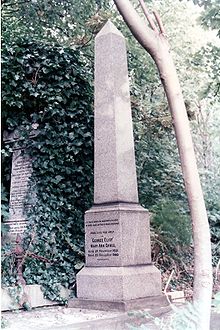 The Final Footprint – Eliot was not buried in Westminster Abbey because of her denial of the Christian faith and her “irregular” though monogamous life with Lewes. She was interred in Highgate Cemetery (East), Highgate, London in the area reserved for religious dissenters or agnostics, next to Lewes. In 1980, on the centenary of her death, a memorial stone was established for her in the Poets’ Corner. Several buildings in her birthplace of Nuneaton are named after her or titles of her novels, such as The George Eliot School (previously George Eliot Community School) and Middlemarch Junior School. In 1948, Nuneaton Emergency Hospital was named George Eliot Hospital in Eliot’s honour. George Eliot Road, in Foleshill, Coventry was named in her honour. Nuneaton motor cycle manufacturer John Birch named his motor cycles after her. A statue of Eliot is in Newdegate Street, Nuneaton, and Nuneaton Museum & Art Gallery has a display of material related to her. Other notable final footprints at Highgate include; Karl Marx, Christina Rossetti and Jean Simmons.
The Final Footprint – Eliot was not buried in Westminster Abbey because of her denial of the Christian faith and her “irregular” though monogamous life with Lewes. She was interred in Highgate Cemetery (East), Highgate, London in the area reserved for religious dissenters or agnostics, next to Lewes. In 1980, on the centenary of her death, a memorial stone was established for her in the Poets’ Corner. Several buildings in her birthplace of Nuneaton are named after her or titles of her novels, such as The George Eliot School (previously George Eliot Community School) and Middlemarch Junior School. In 1948, Nuneaton Emergency Hospital was named George Eliot Hospital in Eliot’s honour. George Eliot Road, in Foleshill, Coventry was named in her honour. Nuneaton motor cycle manufacturer John Birch named his motor cycles after her. A statue of Eliot is in Newdegate Street, Nuneaton, and Nuneaton Museum & Art Gallery has a display of material related to her. Other notable final footprints at Highgate include; Karl Marx, Christina Rossetti and Jean Simmons.
#RIP #OTD in 1939 singer (“Bo-Weevil Blues”, “Moonshine Blues”, “See See Rider Blues”, “Ma Rainey’s Black Bottom”, “Soon This Morning”), the “Mother of the Blues” Ma Rainey died of a heart attack in Columbus, Georgia, aged 53. Porterdale Cemetery, Columbus.
#RIP #OTD in 1943 writer (The Tale of Peter Rabbit), illustrator, natural scientist and conservationist (Lake District National Park) Beatrix Potter died of pneumonia and heart disease at her home in Near Sawrey, Cumbria, England at the age of 77. Cremation
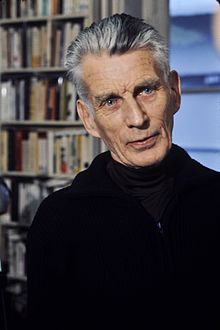 On this day in 1989, avant-garde novelist, playwright, theatre director, and poet, member of the French Resistance, Samuel Beckett died in a nursing home in Paris at the age of 83. Born Samuel Barclay Beckett on Good Friday, 13 April 1906 in Foxrock, Dublin. Beckett lived in Paris for most of his adult life and wrote in both English and French. His work offers a bleak, tragicomic outlook on human nature. In my opinion, Beckett is among the most influential writers of the 20th century. He is considered one of the last modernists. As an inspiration to many later writers, he is also sometimes considered one of the first postmodernists. Beckett is one of the key writers in what has been called the “Theatre of the Absurd”. His work became increasingly minimalist in his later career. Beckett was awarded the 1969 Nobel Prize in Literature “for his writing, which—in new forms for the novel and drama—in the destitution of modern man acquires its elevation”. He was elected Saoi of Aosdána in 1984. Suzanne Déchevaux-Dumesnil (1900 – 17 July 1989) was the tennis partner, lover, and later wife (1961 – 1989 her death) of Beckett. Barbara Bray had a long term relationship with Beckett, from 1961 to his death.
On this day in 1989, avant-garde novelist, playwright, theatre director, and poet, member of the French Resistance, Samuel Beckett died in a nursing home in Paris at the age of 83. Born Samuel Barclay Beckett on Good Friday, 13 April 1906 in Foxrock, Dublin. Beckett lived in Paris for most of his adult life and wrote in both English and French. His work offers a bleak, tragicomic outlook on human nature. In my opinion, Beckett is among the most influential writers of the 20th century. He is considered one of the last modernists. As an inspiration to many later writers, he is also sometimes considered one of the first postmodernists. Beckett is one of the key writers in what has been called the “Theatre of the Absurd”. His work became increasingly minimalist in his later career. Beckett was awarded the 1969 Nobel Prize in Literature “for his writing, which—in new forms for the novel and drama—in the destitution of modern man acquires its elevation”. He was elected Saoi of Aosdána in 1984. Suzanne Déchevaux-Dumesnil (1900 – 17 July 1989) was the tennis partner, lover, and later wife (1961 – 1989 her death) of Beckett. Barbara Bray had a long term relationship with Beckett, from 1961 to his death.
 The Final Footprint – Suzanne died on 17 July 1989. The two were interred together in the Cimetière du Montparnasse in Paris and share a simple granite gravestone that follows Beckett’s directive that it should be “any colour, so long as it’s grey.” Other notable Final Footprints at Montparnasse include; Charles Baudelaire, Simone de Beauvoir, Emmanuel Chabrier, César Franck, Guy de Maupassant, Adah Isaacs Menken, Man Ray, Camille Saint-Saëns, Jean-Paul Sartre, Jean Seberg, and Susan Sontag.
The Final Footprint – Suzanne died on 17 July 1989. The two were interred together in the Cimetière du Montparnasse in Paris and share a simple granite gravestone that follows Beckett’s directive that it should be “any colour, so long as it’s grey.” Other notable Final Footprints at Montparnasse include; Charles Baudelaire, Simone de Beauvoir, Emmanuel Chabrier, César Franck, Guy de Maupassant, Adah Isaacs Menken, Man Ray, Camille Saint-Saëns, Jean-Paul Sartre, Jean Seberg, and Susan Sontag.
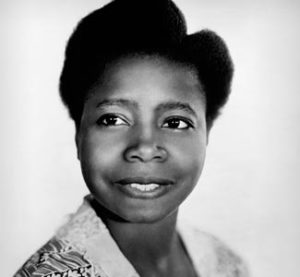 On this day in 1995, actress, Butterfly McQueen, died at the Augusta Regional Medical Center in Augusta, Georgia at the age of 84. Born Thelma McQueen on 7 January 1911 in Tampa, Florida. Apparently, her nickname was a tribute to her constantly moving hands. She appeared as Prissy, Scarlett O’Hara’s maid in the film version of Margaret Mitchell’s Gone with the Wind. The cast of GWTW included; Vivien Leigh, Clark Gable, Thomas Mitchell, and Hattie McDaniel. She never married.
On this day in 1995, actress, Butterfly McQueen, died at the Augusta Regional Medical Center in Augusta, Georgia at the age of 84. Born Thelma McQueen on 7 January 1911 in Tampa, Florida. Apparently, her nickname was a tribute to her constantly moving hands. She appeared as Prissy, Scarlett O’Hara’s maid in the film version of Margaret Mitchell’s Gone with the Wind. The cast of GWTW included; Vivien Leigh, Clark Gable, Thomas Mitchell, and Hattie McDaniel. She never married.
The Final Footprint – McQueen’s body was donated to medical science, per her wishes.
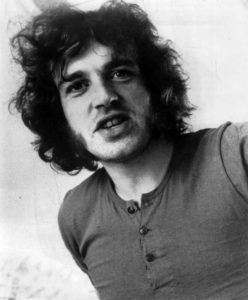 On this day in 2014, singer and musician Joe Cocker died from lung cancer in Crawford, Colorado, at the age of 70. Born John Robert “Joe” Cocker on 20 May 1944 in Sheffield, West Riding of Yorkshire, England. Perhaps best known for his gritty voice, spasmodic body movement in performance and definitive versions of popular songs of varying genre.
On this day in 2014, singer and musician Joe Cocker died from lung cancer in Crawford, Colorado, at the age of 70. Born John Robert “Joe” Cocker on 20 May 1944 in Sheffield, West Riding of Yorkshire, England. Perhaps best known for his gritty voice, spasmodic body movement in performance and definitive versions of popular songs of varying genre.
Cocker’s cover of the Beatles’ “With a Little Help from My Friends” reached number one in the UK in 1968. He performed the song live at Woodstock in 1969 and performed the same year at the Isle of Wight Festival, and at the Party at the Palace concert in 2002 for the Golden Jubilee of Queen Elizabeth II. His version also became the theme song for the TV series The Wonder Years. His 1974 cover of “You Are So Beautiful” reached number five in the US. Cocker was the recipient of several awards, including a 1983 Grammy Award for his US number one “Up Where We Belong”, a duet with Jennifer Warnes.
In 2007, Cocker was awarded a bronze Sheffield Legends plaque in his hometown and in 2008 he received an OBE at Buckingham Palace for services to music.
In 1963, Cocker began dating Eileen Webster, also a resident of Sheffield. The couple dated intermittently for the next 13 years, and separated permanently in 1976.
In 1978, Cocker moved onto a ranch owned by Jane Fonda in Santa Barbara, California. Pam Baker, a local summer camp director and fan of Cocker’s music, persuaded the actress to lend the house to Cocker. Baker began dating Cocker, and they married on 11 October 1987. The couple resided on the Mad Dog Ranch in Crawford, Colorado.
Cocker performing on 16 October 1980 in the National Stadium, Dublin
 The Final Footprint
The Final Footprint
On 11 September 2015 a “Mad Dogs & Englishmen” tribute concert to Joe Cocker was performed at the Lockn’ Festival featuring Tedeschi Trucks Band, Chris Stainton, Leon Russell, Rita Coolidge, Claudia Lennear, Pamela Polland, Doyle Bramhall II, Dave Mason, John Bell, Warren Haynes and Chris Robinson, amongst others. In commemoration, a Joe Cocker Mad Dogs and Englishmen Memory Book was created by Linda Wolf to celebrate the event. Cocker was cremated and his cremated remains are interred at Garden of Memories Cemetery in Crawford.
Have you planned yours yet?
Follow TFF on twitter @RIPTFF

